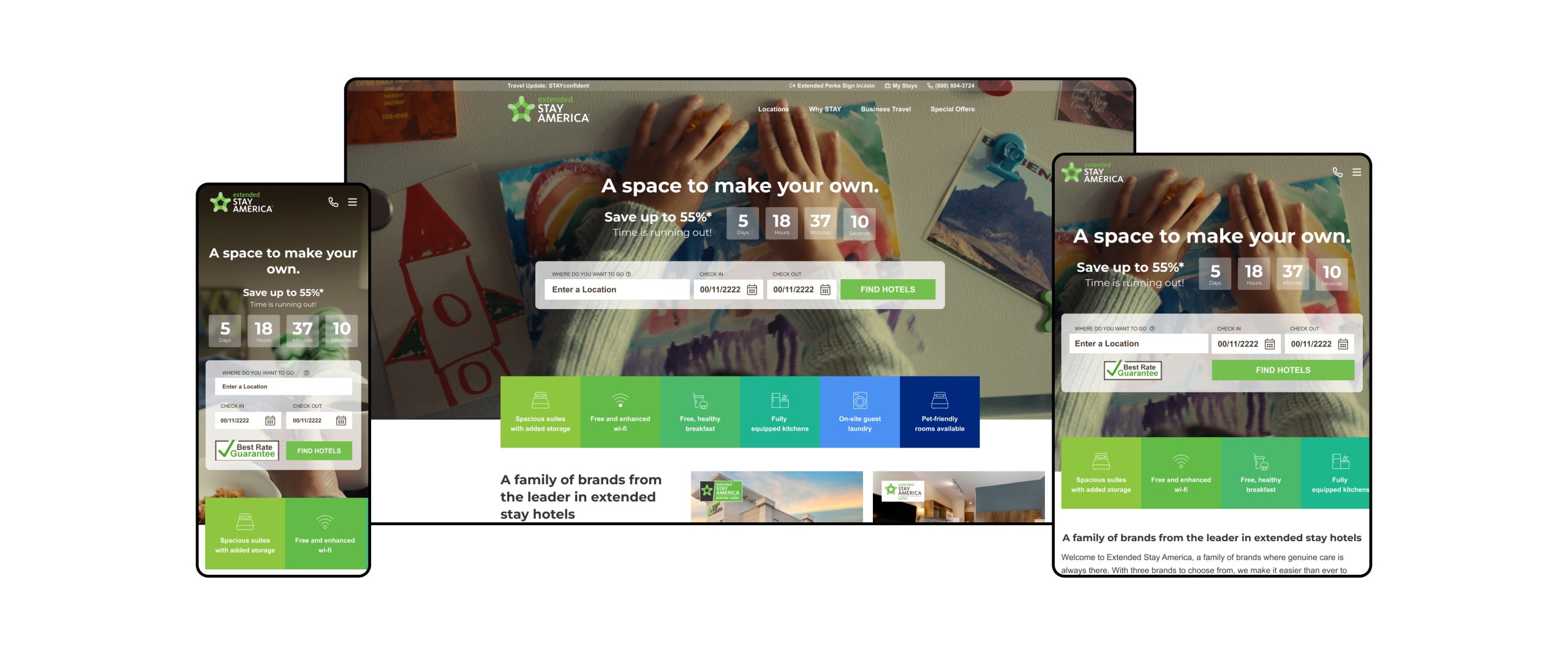I conducted an in-depth analysis of competitor websites in both the extended stay and traditional hotel space, focusing on booking flow, information architecture, and visual presentation. Key competitors analyzed included:
- Residence Inn by Marriott
- Home2 Suites by Hilton
- AirBnB (for longer stays)
Key findings revealed opportunities to highlight Extended Stay America’s unique value propositions more effectively, particularly their kitchen amenities, weekly rate discounts, and pet-friendly policies.
User Research
We conducted user interviews with 12 frequent extended-stay guests and analyzed existing user data to understand pain points:
- Business travelers expressed frustration with finding information about workspace amenities
- Families needed clearer information about room configurations
- Returning guests wanted a faster booking experience
- Mobile users experienced significant friction during the checkout process
Information Architecture
I restructured the site information to create a more intuitive flow:
- Simplified main navigation from 8 categories to 5 core sections
- Created a logical hierarchy that prioritized booking and location information
- Developed user flows that reduced steps to reservation by 40%
Wireframing
I created low-fidelity wireframes focusing on:
- Streamlined booking process reducing steps from 7 to 4
- Clear presentation of room options with prominent feature comparisons
- Intuitive property search with map integration
- Enhanced property detail pages highlighting extended-stay benefits
Visual Design
The visual redesign focused on:
- Clean, modern aesthetic with ample white space
- Consistent application of brand colors and typography
- High-quality photography showcasing room features important to extended-stay guests
- Card-based design for easy scanning of property options
- Prominent calls-to-action with visual hierarchy guiding users through the booking process
Prototyping
I developed interactive prototypes for key user flows:
- Property search and filtering
- Room selection and comparison
- Booking and reservation process
- Account management for returning guests

